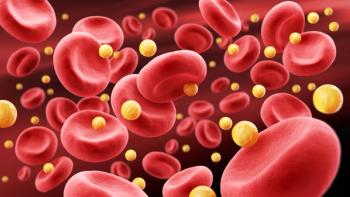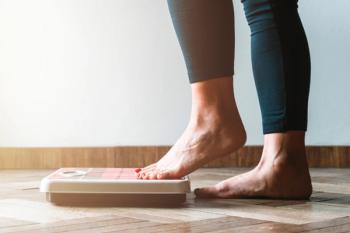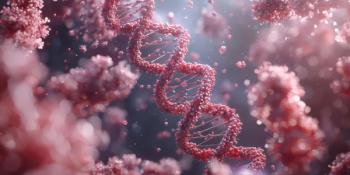Initial therapy with finerenone (Kerendia; Bayer HealthCare Pharmaceuticals) with empagliflozin (Jardiance; Eli Lilly and Co, Boehringer Ingelheim) in patients with chronic kidney disease (CKD) and type 2 diabetes led to a greater reduction in the urinary albumin-to-creatinine ratio (UACR) than either treatment alone, wrote authors of research published in the New England Journal of Medicine.1 These findings, which were presented at the 2025 European Renal Association Congress, held in Vienna, Austria, from June 4 to 7, are part of the CONFIDENCE clinical trial (NCT05254002).1-3
About the Trial
Trial Name: A Study to Learn How Well the Treatment Combination of Finerenone and Empagliflozin Works and How Safe it is Compared to Each Treatment Alone in Adult Participants With Long-term Kidney Disease (Chronic Kidney Disease) and Type 2 Diabetes (CONFIDENCE)
ClinicalTrials.gov ID: NCT05254002
Completion Date: March 14, 2025
Prior to this trial, there were limited data that supported the simultaneous use of finerenone, a nonsteroidal mineralocorticoid receptor agonist, and sodium-glucose cotransporter-2 inhibitors. These treatments have independently demonstrated their efficacy in delaying the progression of CKD while improving cardiovascular outcomes. According to the investigators, the CONFIDENCE study is the first randomized trial to test the hypothesis that early, simultaneous use of both agents would provide superior reduction in UACR over a 6-month period compared with either drug used independently.1,2
For this parallel-group, double-blind, 3-arm, randomized phase 2 clinical trial, patients with CKD (estimated glomerular filtration rate [eGFR], 30-90 ml/min/1.73 m2 of body surface area), albuminuria (UACR, 100-5000 or less [albumin measured in milligrams and creatinine measured in grams]), and type 2 diabetes who were already receiving a renin–angiotensin system inhibitor were randomly assigned to receive 10 to 20 mg of finerenone per day with placebo, 10 mg of empagliflozin per day with a finerenone-matching placebo, or a combination of finerenone and empagliflozin. The trial’s primary end point was the relative change in the log-transformed mean UACR from baseline to 180 days. Safety (eg, acute kidney injury frequency, adverse events [AEs]) was also assessed.1,2
At baseline, the UACR was observed to be similar among the participants in the 3 groups, with median values of 579 (IQR, 292-1092) among those with available data (combination therapy group: 265; finerenone group: 258; and empagliflozin group: 261). At day 180, the reduction in the UACR with combination therapy was observed to be about 29% greater than those receiving finerenone alone (least-squares mean ratio of the difference in the change from baseline: 0.71; [95% CI, 0.61-0.82]; P < .001) and 32% greater than those receiving empagliflozin alone (least-squares mean ratio of the difference in the change from baseline: 0.68 [95% CI, 0.59-0.79]; P < .001).1
Of note, neither agent—whether alone or in combination—led to unexpected AEs. Symptomatic hypotension, acute kidney injury, and hyperkalemia leading to drug discontinuation were considered uncommon, wrote the study authors.1
“The CONFIDENCE study delivers the clear message that simultaneous initiation of finerenone and empagliflozin led to an early and additive reduction in UACR of 52% in patients with CKD and type 2 diabetes, which was significantly greater than with either treatment alone,” lead researcher Rajiv Agarwal, MD, professor emeritus of medicine at Indiana University’s School of Medicine, said in a news release. “In other chronic conditions like heart failure or hypertension, we’re moving away from the traditional stepwise approach toward upfront combination therapy. In CONFIDENCE, 70% of patients on both therapies achieved the [American Diabetes Association]-recommended UACR reduction target of [less than] 30%. Since UACR is a key mediator of kidney and cardiovascular outcomes, these results are highly relevant for clinical decision-making.”2
REFERENCES
1. Agarwal R, Green JB, Hiddo JLH, et al. Finerenone with Empagliflozin in Chronic Kidney Disease and Type 2 Diabetes. New Engl J Med. Published 2025, June 5. doi:10.1056/NEJMoa2410659
2. Beyond. Combination finerenone and empagliflozin shows superior efficacy in reducing albuminuria in chronic kidney disease and type 2 diabetes patients. News release. June 5, 2025. Accessed June 12, 2025. https://www.eurekalert.org/news-releases/1086458
3. A Study to Learn How Well the Treatment Combination of Finerenone and Empagliflozin Works and How Safe it is Compared to Each Treatment Alone in Adult Participants With Long-term Kidney Disease (Chronic Kidney Disease) and Type 2 Diabetes (CONFIDENCE). ClinicalTrials.gov identifier: NCT05254002. Updated March 18, 2025. Accessed June 12, 2025. https://clinicaltrials.gov/study/NCT05254002



















































































































































































































